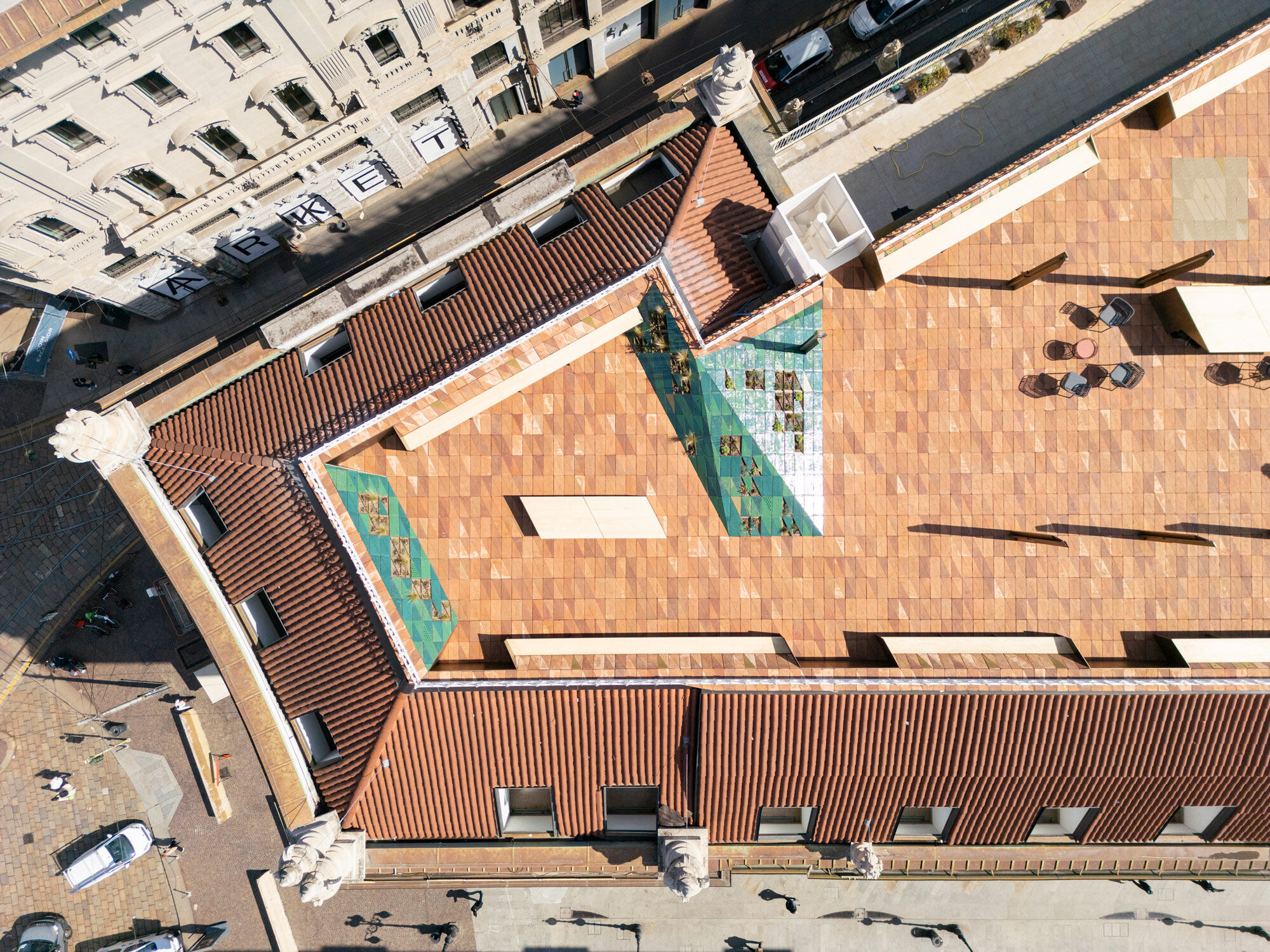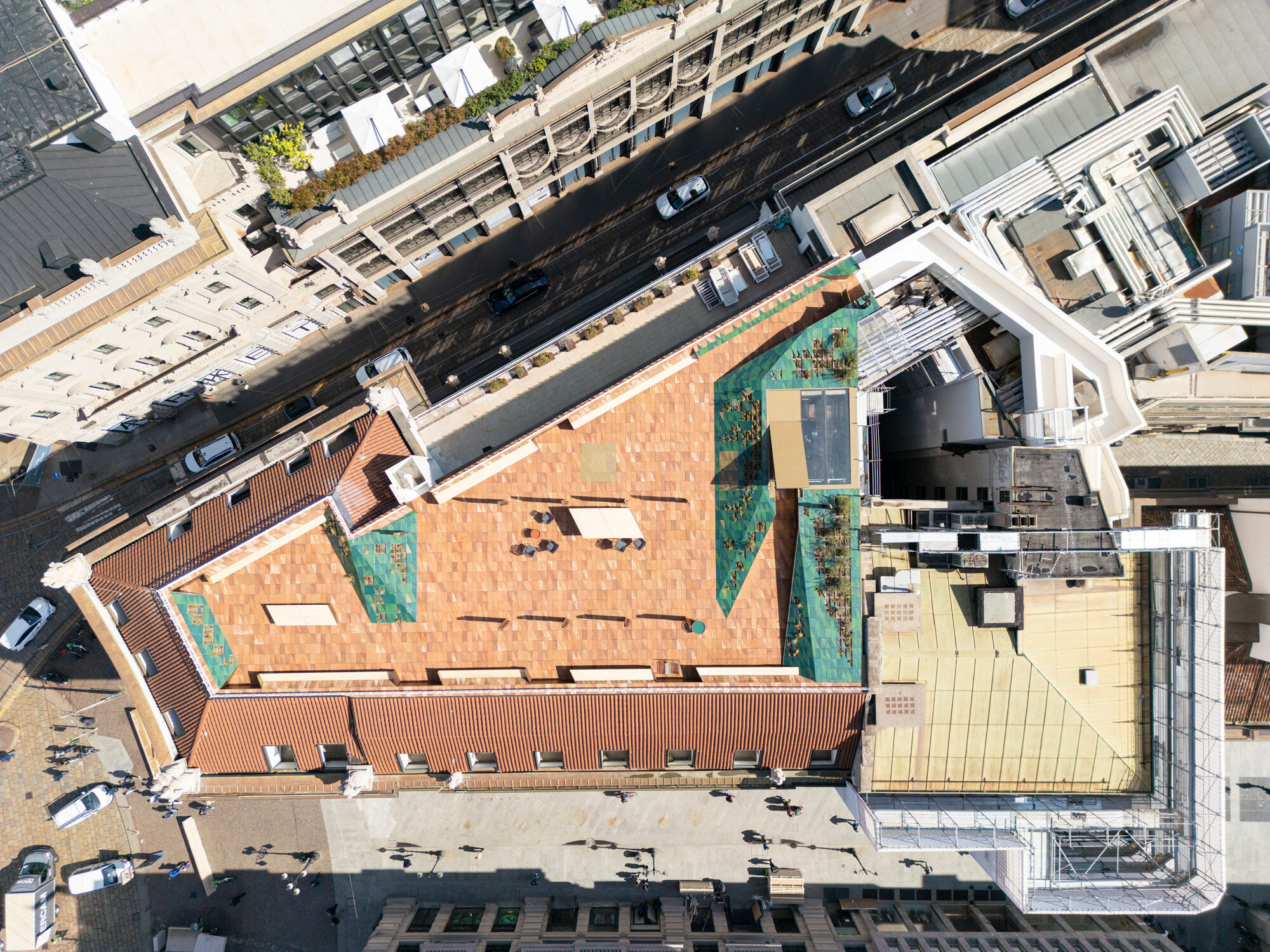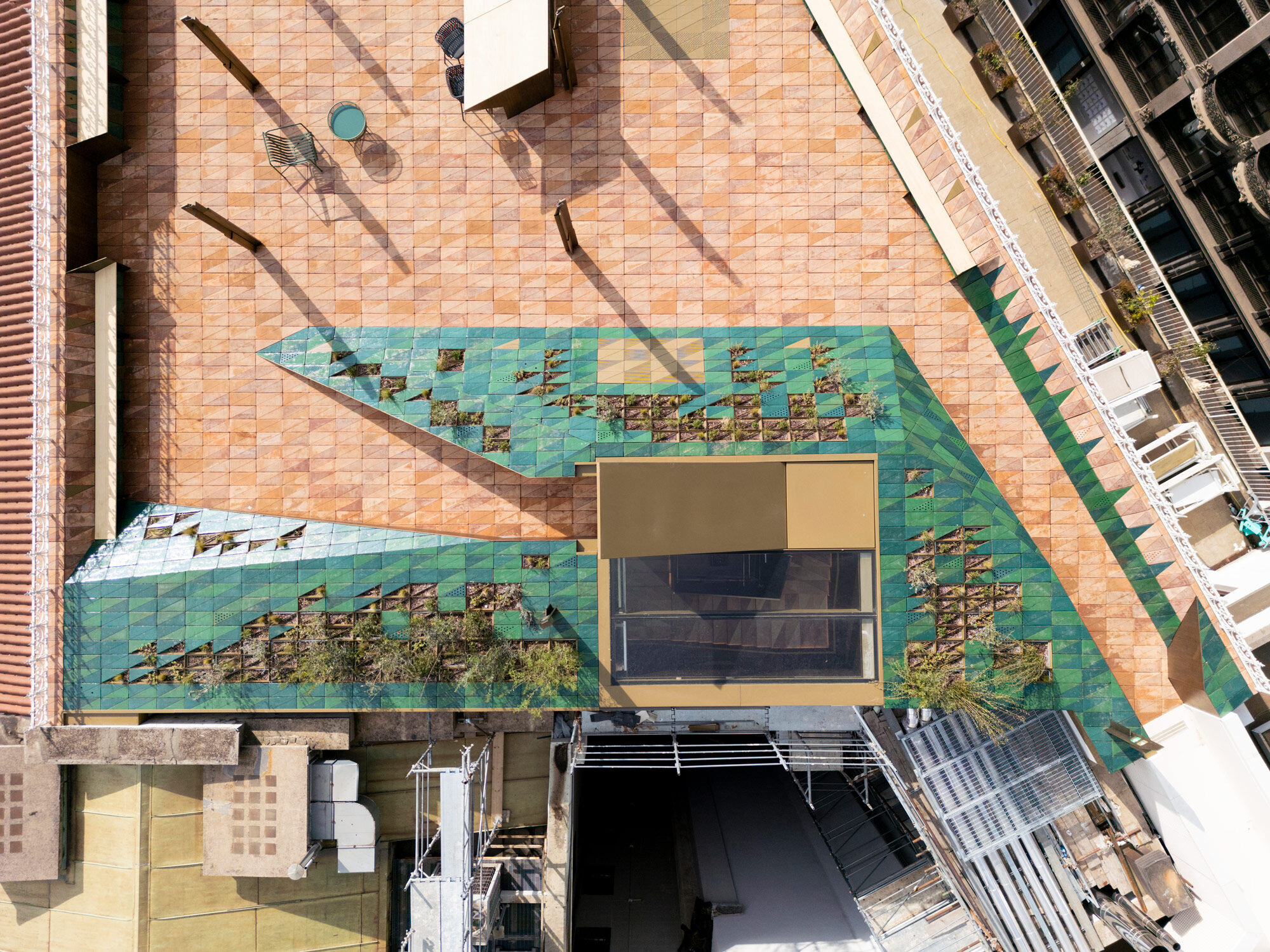Right in the heart of Milan, in Piazza Cordusio, the restoration of the open space at the top of a building by Luca Beltrami commissioned by Countess Celeste Dario-Biandrà, dating back to the beginning of the 20th century, generated an original place that slots into the built landscape of the nineteenth-century heart of the city.

Made of specially designed triangle-cut handmade terracotta tiles of different shades of colour, the flooring of this new space shares its material qualities with those of Milan's roofs. Also covered in terracotta, the parapets create the impression of the building's pitched roof curving and extending onto the terrace. This creates an elevated plaza with a mimetic appearance, to which the noble materiality of terracotta lends uniqueness and understated elegance.

The project takes into account the building's Monuments and Fine Arts Office's restrictions, such as the ridge's height limits and the need to divert the terrace's existing utilities supply systems. A motorized large-panel roof window provides the main access and a scenic element of ascent, and is left permanently open whenever the terrace is being used.

Nautical-style teak furniture and work areas are arranged into an extremely flexible space that can be used to take a break from work or organise outdoor meetings, conferences and events. A removable overhang protects some of the areas equipped with tables from the sun, while the entire trapezoidal perimeter of the terrace features seats and panoramic recesses coated with brushed brass.

In terms of greenery, the vegetation proposed by the design approach is meant to spontaneously colonise the terracotta, in chromatic and textural uniformity with the surrounding urban context. Visitors to the terrace are welcomed at the entrance by soft-coloured medium-height plants with flexible stems that float in the wind; further on, the vegetation's size gradually reduces, with species chosen to ensure alternate blossoming throughout the year.

These minimal accurate interventions, in perfect harmony with the terracotta, highlight in places small seasonal wonders, reminding us that we are in a unique place that owes its iconic character to discretion.

The project reveals a design concept focused on spontaneous nature, based on the search for a rich biodiversity populated by pollinator plants that in spring turn it into a point of reference for insects in the centre of Milan.































